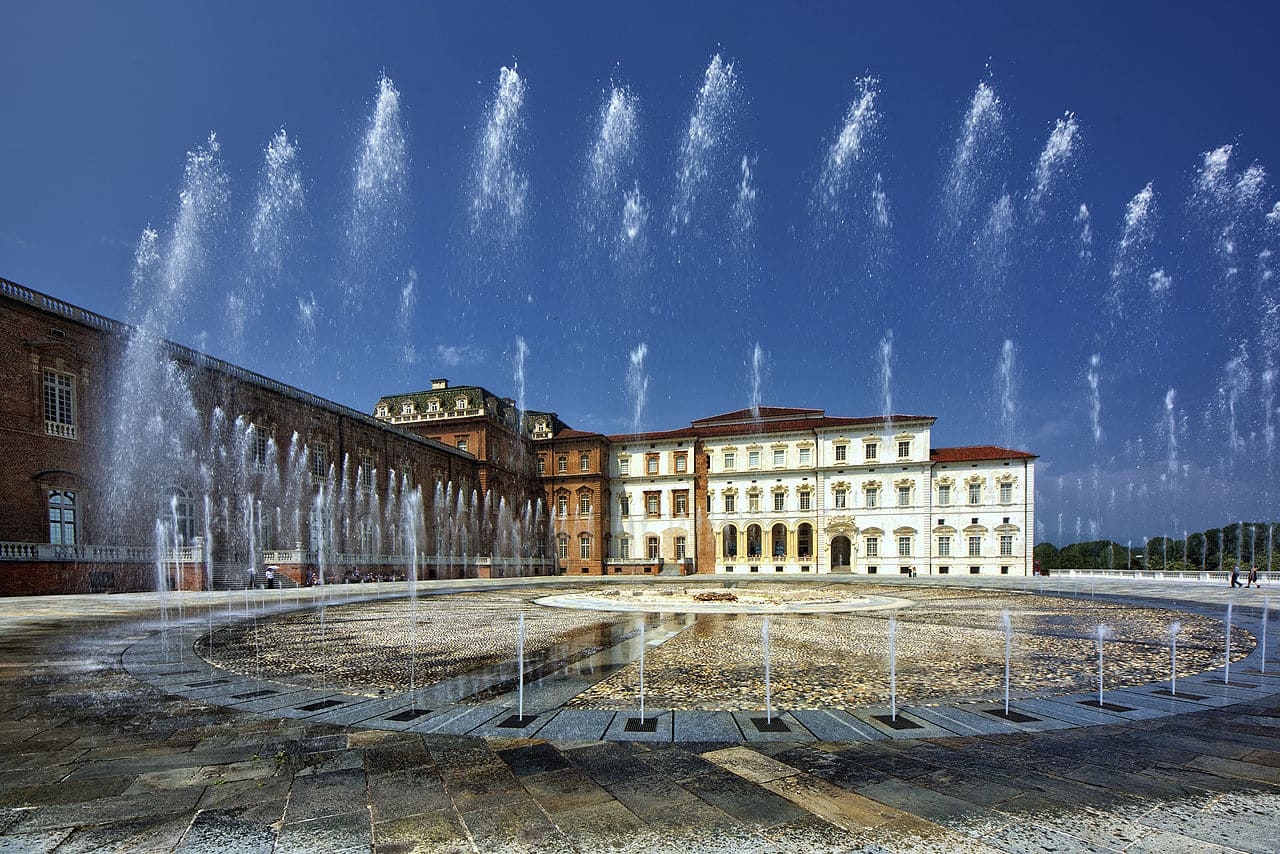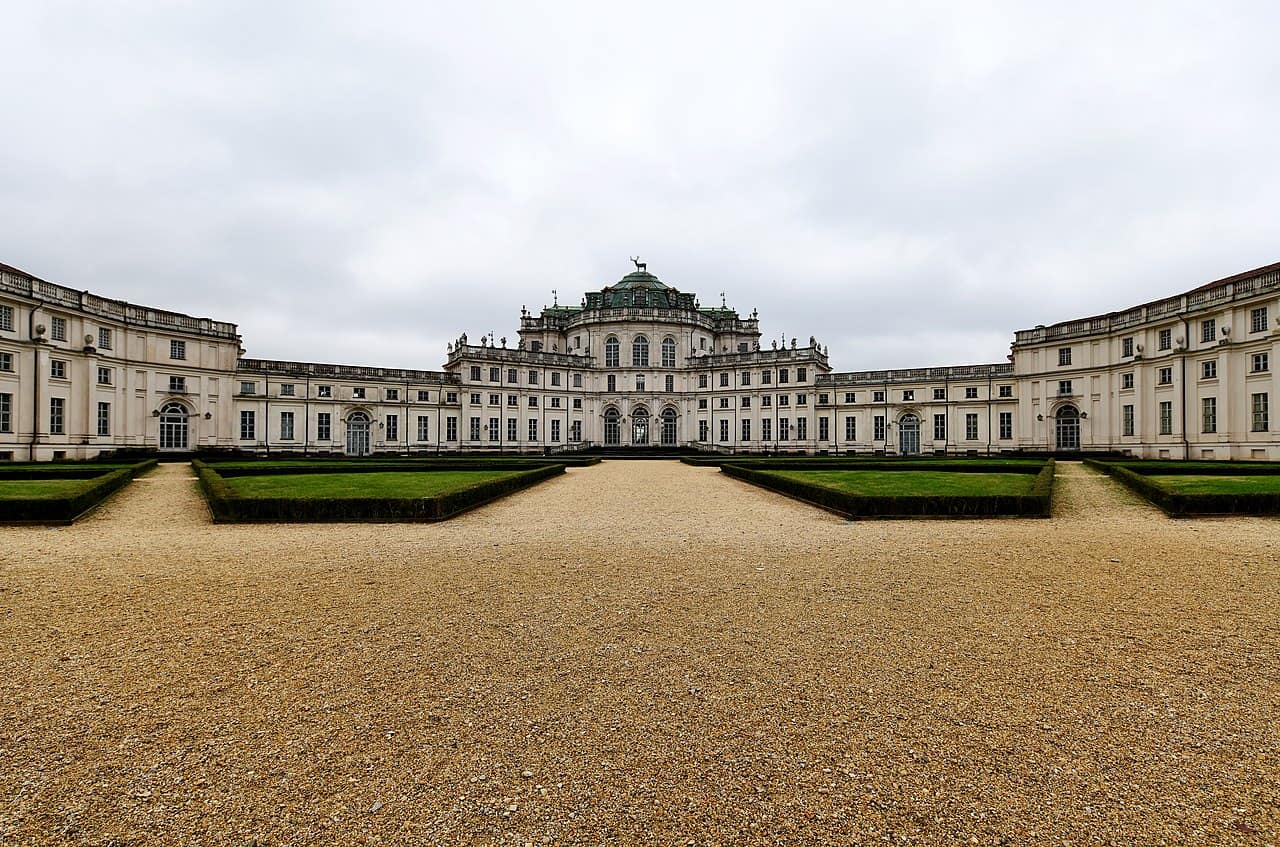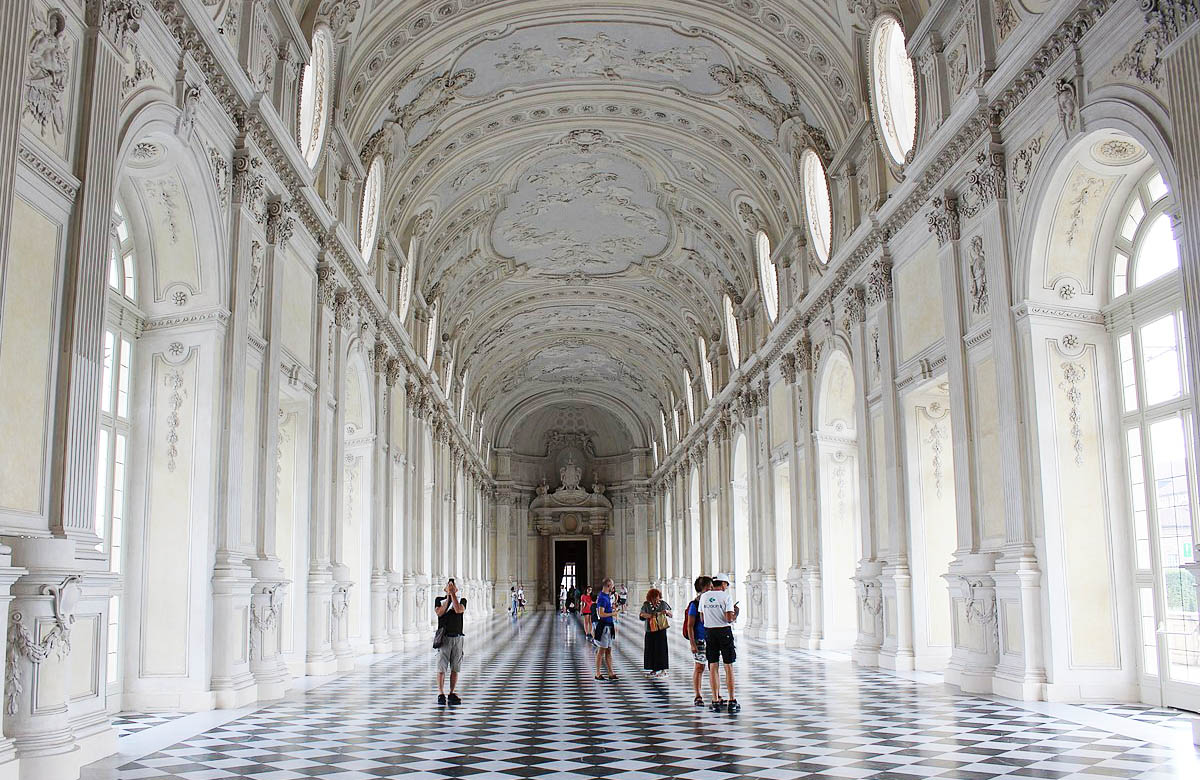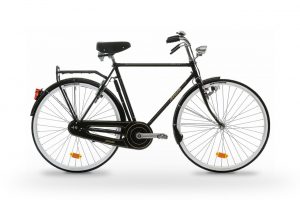STUPINIGI – VENARIA
A coast to coast tour of Turin … or Reggia to Reggia in this case. Surrounded by nature and by the woods of the outskirts of the city, the two Savoy buildings, Palazzina di Caccia Stupinigi and Reggia di Venaria Reale are two of Turin’s must-see attractions where, at the Savoy court, the bestn VIII century architects and artists have expressed with great at full their artistic and technical commitment.
[show_more more=”more…” less=”less” color=”#9b1818″]
The Piedmont Region, collaborating with some neighboring municipalities, has rebuilt the ancient hunting trails within the Natural Park and it has also created various cycling routes immersed in the green adjacent to the Palazzina di Caccia Stupinigi. Moreover, thanks to the “Corona Verde” project which began in 1600 with Castellamonte, both Savoy residences are inserted in the green belt of the metropolitan area of Turin; the goal is to redevelop and promote the identity of the Turin area, rich in its uniqueness, shaping the landscape with respect and facilitating travel from urban areas to places of interest such as these. Turin is the Baroque city ‘’par excellence’’, rich in artistic influences that since 1700 operated at the court of Savoy; the Juvarra from Messina is the greatest exponent, who also contributed to the design of the Basilica of Superga as well as the two ‘’Regge’’ and the porticoes of Porta Susina and Porta Palazzo.
Returning to our ride, the path is straight, enjoyable and within the reach of all bikers who love to combine the discovery of the landscape with a healthy ride by bike. The cycle route starts from the Turin center where TurinBike is located. Continuing on Via Sacchi enriched by the beautiful arcades located in different areas of Turin, the course then becomes the Soviet Union. You will feel that you have reached your destination once you leave the city and cross the Sangone river from Turin. However you arrive in just over 10 km.
The sight is immediately caught by the deer overlooking the dome of the building. The original deer is displayed in hall of the building and you will immediately feel the excitement that the nobles must have felt hanging with the king , hunting and making costly decisions freeing their thoughts in a majestic environment, amended by different personalities who have lived in the course of history. Inside you will find rooms, wings, gardens, toilets used for different functions on the advice of King Amadeo II of Savoy and of those who lived in the building. Among these is the beautiful anti-chapel of Sant’Uberto which shares with the Reggia di Venaria the name of one of the buildings (although that of the Reggia is a real Church). In addition, the furniture with which the building has been furnished over the years is gorgeous, including the typical “Versaille” style cabinets, bookcases, commode, fauteuil inlaid with wood of different shades, richly gilded and embellished by the search for materials such as ebony of which Boulle, the King of Sun’s cabinetmaker, had launched the fashion; and still the paintings and frescoes such as those in the Sala dei Ritratti where some 50 paintings depicting the Savoy descendants are displayed. It has also been the home of the Furnishing Museum for 100 years and hosts international art exhibitions.
If you want to have a rest you can find Villa real next to the building: croissants, coffee and other delights with a view of the Palazzina in a wide-ranging environment full of histories
Then we head towards the Reggia di Venaria the second Savoy wonder. Passing through Turin, you cross Mirafiori up to Pozzo Strada where there is the large Parco Ruffini were anyone can (as for the Valentino Park) practicing sport and walking in the countryside. Then, you have arrived in the Montegrappa area when you walk along the Tesoriera, the elegant enclosed park in which Villa Sartirana, called Treasurer (‘’Tesoriera’’), is inserted inside because it was built for the general treasurer of the Savoy state Ferrero di Cocconato closely linked to the court of Vittorio Emanuele II. Probably you will not be able to see much of the park given the walls, but from the gate, from which you access it and you can already have a glimpse of it. At this point there is a long way to go until the Royal Palace after which you will see the Stura river on your right. Reaching the large Parco della Pellerina and the Juventus Stadium you arrive at Venaria.
Entering Venaria, you pass through the ancient Via Maestra, today Via Andrea Mensa, interrupted in the middle by the central square in the shape of a medallion, Piazza dell’Annunziata. The shape of the square will surely catch your attentions since it resembles that of the medallion of the collar of the Annunziata symbol of the Savoy knights. Among the gastronomic products of the area, you have to try the Canestrello of Altessano so called because of the baskets (‘’canestri’’) where the sweets were kept after having cooked them; in the past they were called “nebule”, waffles of flour and butter eaten as compensation besides wine and sugar for representations of actors-clerics. The construction material used mainly in the historic center will make you enjoy a serene atmosphere in which the light colors of the buildings stand out and will give you the royalty, constancy and the sense of organization of the place that since the dominion of the Savoy represented a strategic-political point and also for hunting activity. Across the city the magnificent and scenic Palace of Venaria Reale will open before your eyes. The building is huge and includes the city of Venaria, restored along with its historic center and its alleys designed by Castellamonte, the infrastructures, the Borgo Castello della Mandria with its park (totally cycling and worth a visit), the 30 or so farmhouses and internal villas, abandoned lands and now redeveloped as gardens.
As opposed to Stupinigi, the park is fully accessible and from there you can observe how the landscape is totally studied in detail and geometrically as if to exalt a mastery over the nature of this age of great scientific and technical discoveries. Here you can see the remains of the Tempio of Diana (Temple of Diana, goddess of hunting; once beautiful, bathed on all sides by the artificial puddle in which it was placed, a place of rest and courtly amusement. During its renovation, given the utmost quality of the marbles that made it up, it was decided to use them also for the columns of the church of S. Uberto; the temple was dismantled due to the pro-French vision of Vittorio Emanuele II who in 1700 had it replaced by fantasies of water channels and French details. Every noble present at the court had to exalt his abilities to grab a place among the graces of the king and keep his high status; just so it was possible to create one of the greatest expressions of the Italian-French Baroque as the Reggia di Venaria, a clear example of how different personalities managed to make each part unique and unique from the Diana Room, to the Versailles-style Grand Gallery to the famous stables Juvarra, up to the project conceived in toto by the Castellamonte from Turin.
The tour ends at the Royal Palace and from here you can go back to the shop by riding the same route back, but this time with more calm and full of stories to tell about the two Savoy beauties.
[/show_more]



Architecture and history lovers. A tour to discover the hidden treasures of the House of Savoy by visiting the two Savoy royal houses, in the past both hunting estates of the King.




